The output is DC, in a sense. That is, the center of the output, the average voltage, isn't ground, but rather something between ground and Vcc (assuming "ground" is the negative side of Vcc). Ideally, it's right in the middle so you have equal room on either end for the signal without clipping.
It seems like you are thinking of electricity as either "DC" or "AC", but never both. This is a false dichotomy. If anything, DC doesn't exist. To really be DC, the current must be constant, forever. At best, you can manage really, really low frequency AC in reality.
That's not really a useful definition of DC, so rather than define DC as constant forever, we definite it as constant long enough that it might as well be forever. Exactly how long this is depends on the circuit: for an audio circuit, we might draw the line at 5Hz. For an RF circuit, the line might be 10kHz. Everything below this line is "DC", and everything above it is "AC".
With that distinction made, we can look at your circuit and analyze the bias point, as Olin says, under "DC" conditions. Then we can superimpose on that the AC signal, so you have an "AC signal" with a "DC component". To recover just the AC signal, we discard all frequencies below some point.
Paradoxically, if we keep shrinking the range of frequencies that we consider as "AC" until the line is at 0Hz, you'd think now everything is AC and there is no DC. Yet, we then call everything DC, as in a "DC amplifier". I guess this is because it amplifies "everything down to DC", and people got lazy with their language.
